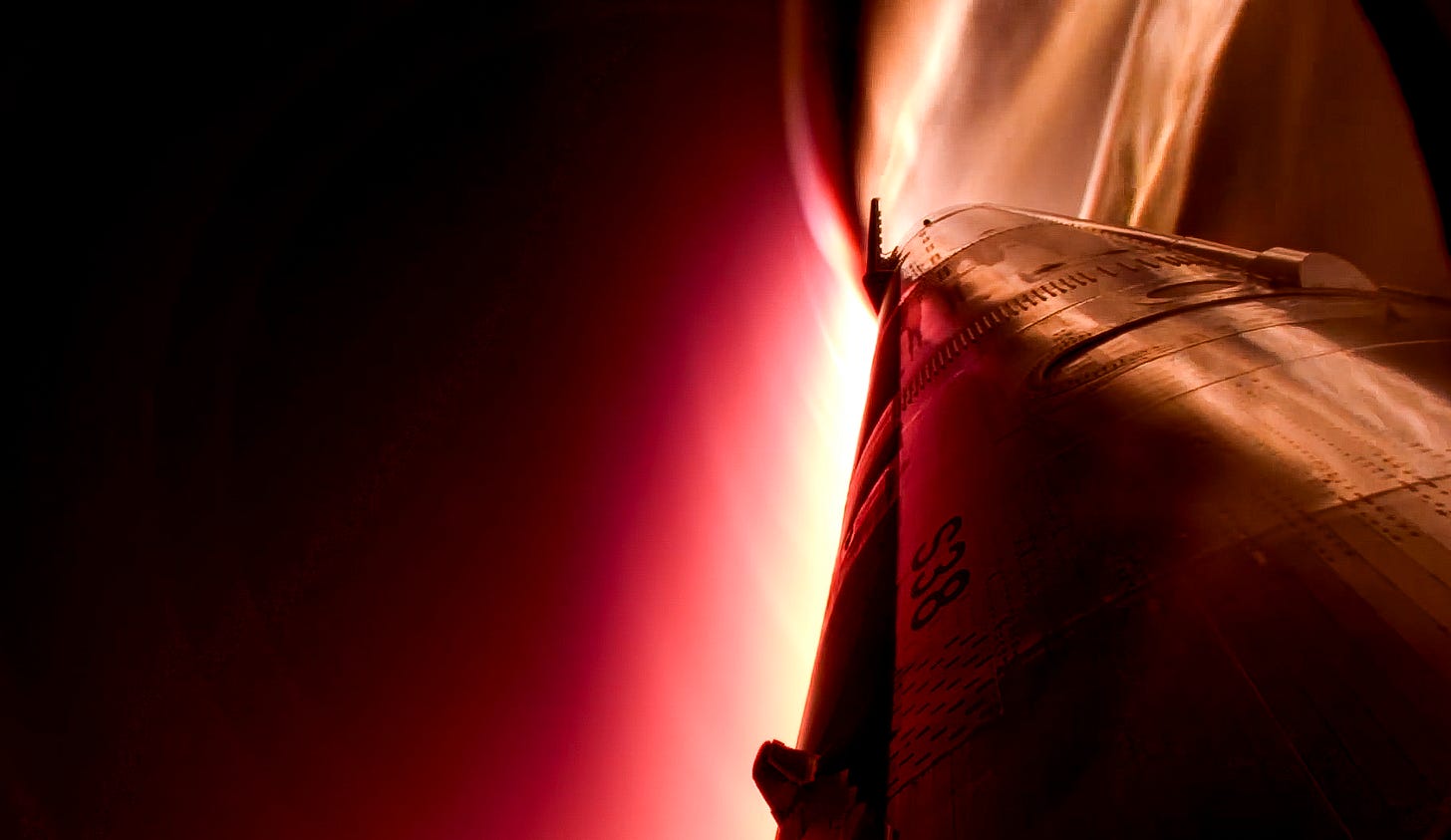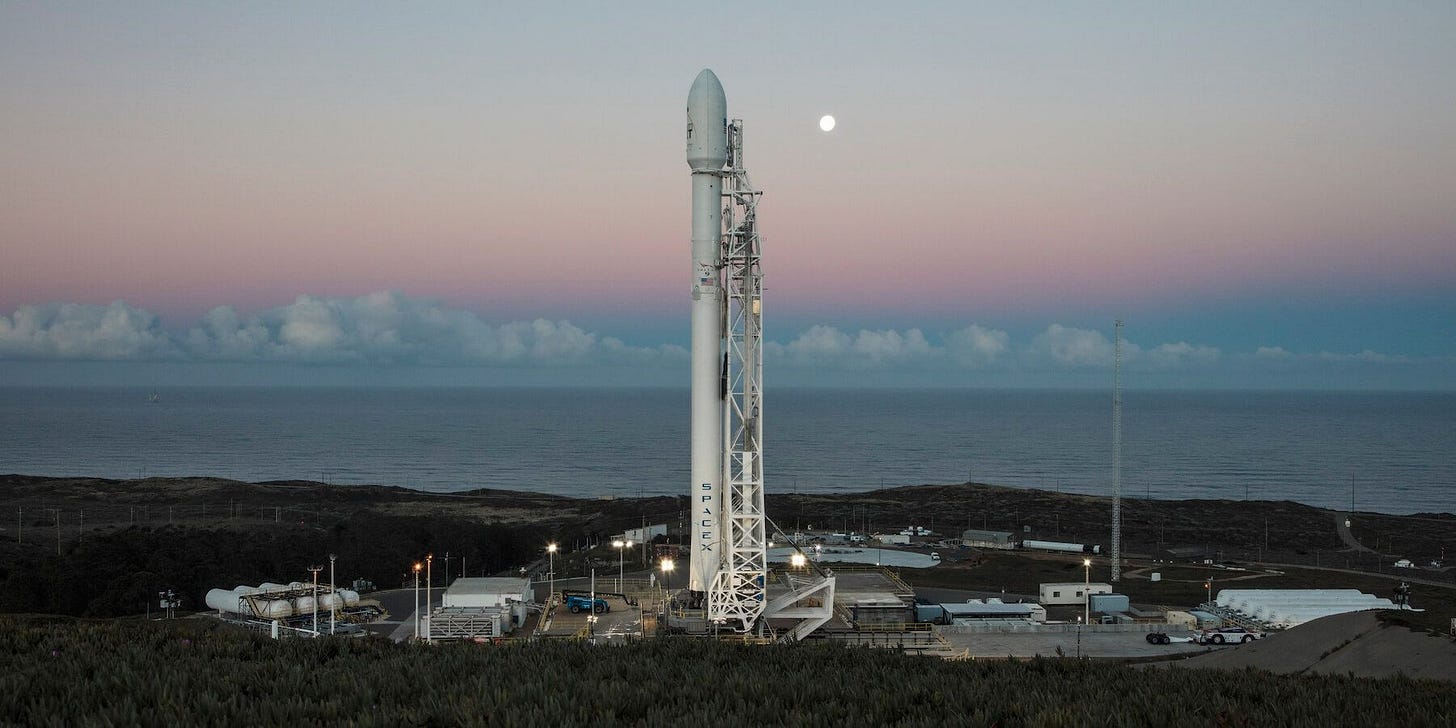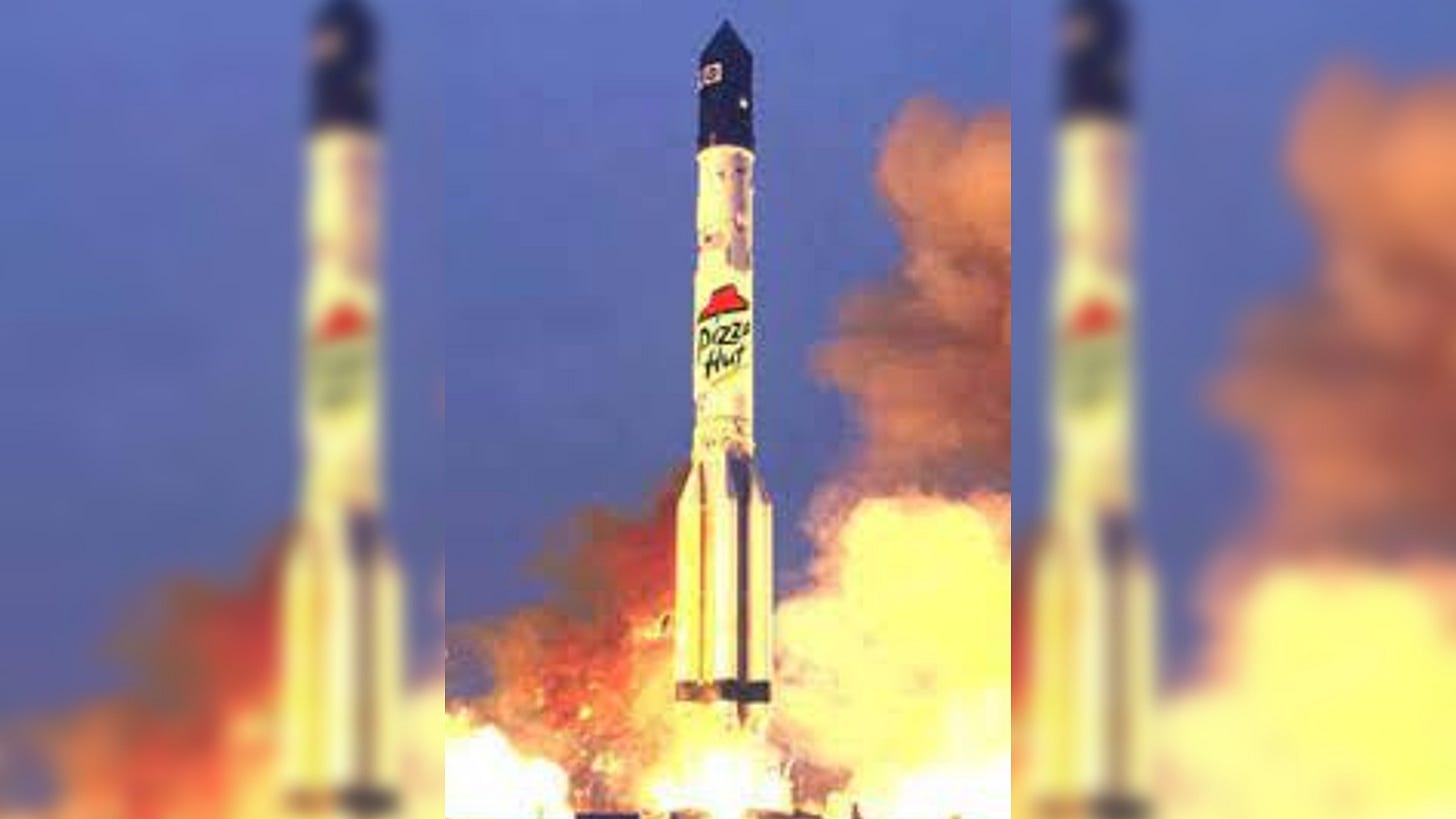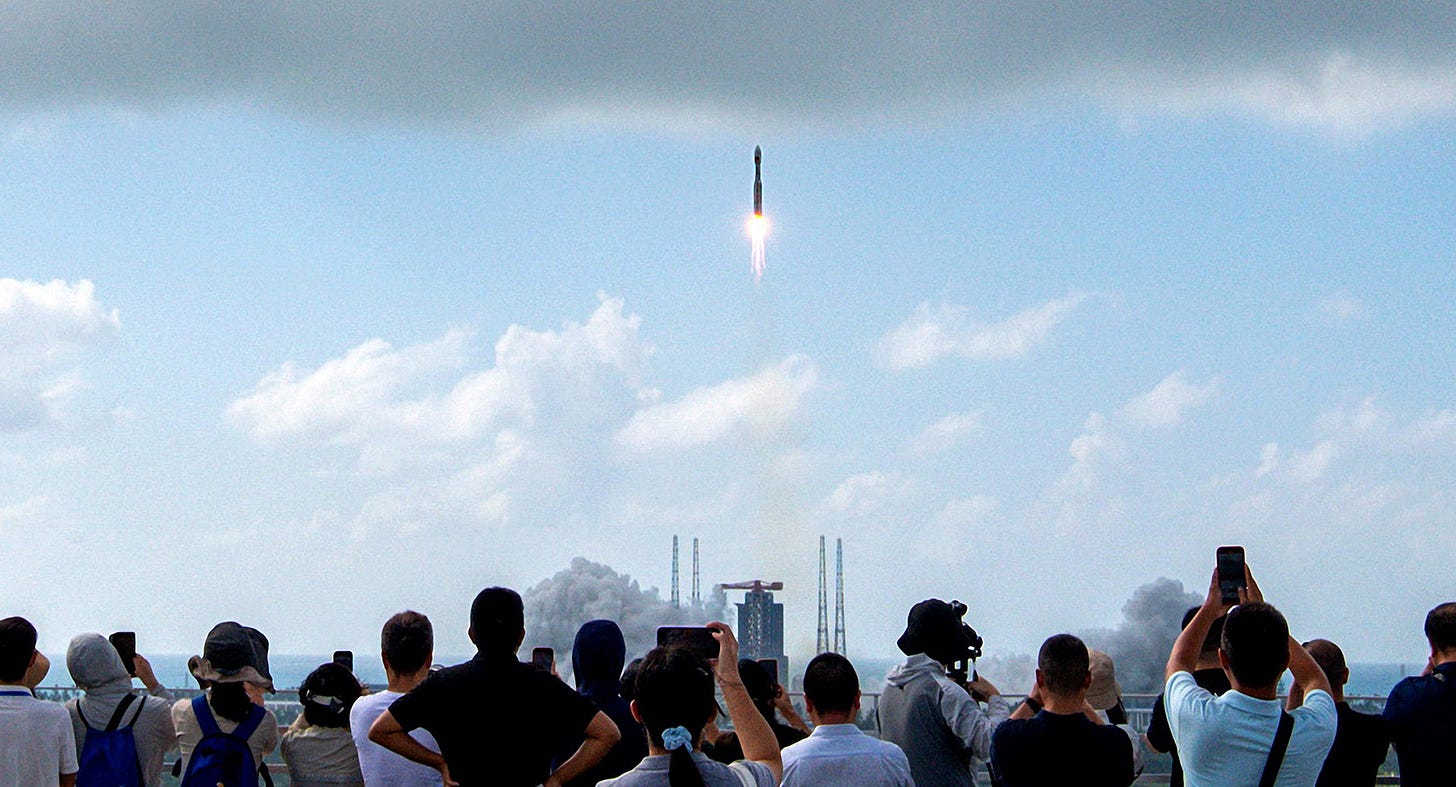This Week in Launch – #5
Starship’s Eleventh-Hour, Europe's orbital Iron Curtain, Roscosmos sells ads, and more
Welcome to the fifth issue of This Week in Launch, a roundup of space-related news posted at the end of each week.
Thank you for joining me! Let’s dive in.
Starship’s Eleventh-Hour Success
On Monday, SpaceX nailed its 11th Starship test flight, launching from Starbase, TX, and marking the final hurrah for its Version 2 prototype.
The hour-long mission hit on all marks: deploying mock satellites, relighting engines in space, and splashing down in the Indian Ocean after heat shield tests, while the booster completed a water landing in the Gulf of Mexico.
Elon Musk called it a “great work” on X, and NASA Acting Administrator Sean Duffy hailed it as a “major step” toward Artemis III’s 2027 moon landing.
Starship Version 3 flights are expected as soon as the year’s end.
On Tuesday, over on the West Coast, the U.S. Air Force greenlit doubling SpaceX’s Falcon launches at Vandenberg to 100 per year starting in 2026. This will supercharge the growth of the world’s biggest launcher amid a record 51 VSFB launches already this year.
European “Iron Curtain” Goes Orbital
On Thursday, the European Commission announced its “Space Shield” satellite defense program to protect communications, navigation, and observation assets from jamming, spoofing, and in-orbit threats posed by Russia and China, fast-tracked for 2026.
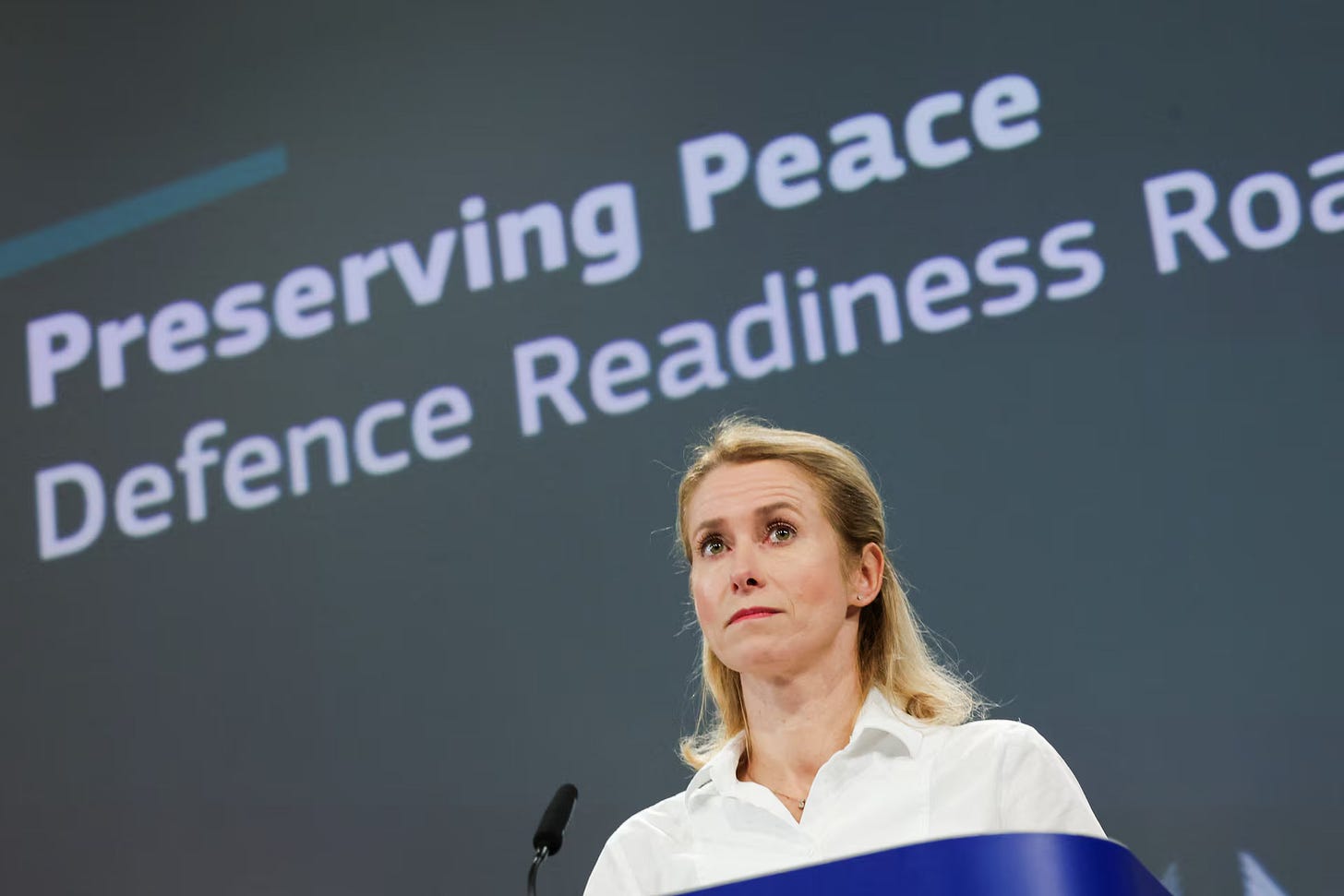
Yet Europe’s launch woes persist.
On Thursday, France’s Arianespace confirmed its Ariane 6’s debut will slip to mid-2026 after years of delays and cost overruns, while Italy’s Avio’s reusable Vega upper stage remains in its design phase for at least two years, forcing the bloc to continue relying on SpaceX for rides.
Germany continues to pour money into the problem, with launch startups Rocket Factory Augsburg and Isar Aerospace showing fast progress, and HyImpulse announcing a 45 million euro raise on Friday.
Roscosmos Sells Ads
Late last month, Russia’s space agency Roscosmos scored a surprising cash lifeline: starting January 1, 2026, rockets and spacecraft can sport ads from approved sponsors, turning its Soyuz vehicles into flying billboards, Roscosmos posted on its official Telegram account.
The move echoes Pizza Hut’s 2000 Proton logo, with revenue split between Roscosmos and the federal budget, provided the ads meet safety specs and hail from “friendly” nations.
This comes as Roscosmos grapples with serious debt and missed deadlines, accelerated by the Ukraine war draining talent and munitions.
China Is Not Racing to the Moon
In contrast to the USA’s turbulent “Hare” of a space program, China says it will continue to “Tortoise” along.
“When the president changes, his policies change,” — “We in China may anchor our goals and always draw a blueprint until the end, so we have always moved forward smoothly and firmly, which is the difference between our two countries.”
– Wu Weiren (吴伟仁), Chief Designer of the Chinese Lunar Exploration Program
Racing or not, a milestone 600th Long March liftoff on Wednesday highlights that the country’s consistent growth will only continue to ramp up. The historic launch sent a new group of internet satellites into LEO, bolstering its megaconstellation.
Stateside, NASA’s Artemis is suffering under a government shutdown since October 1, furloughing staff and freezing non-essential work, including science budgets, with experts warning that China is set to lap the U.S. moon ambitions by 2028.
That’s all for this week. Thank you for reading, and if you have not yet, please consider subscribing.
- David


